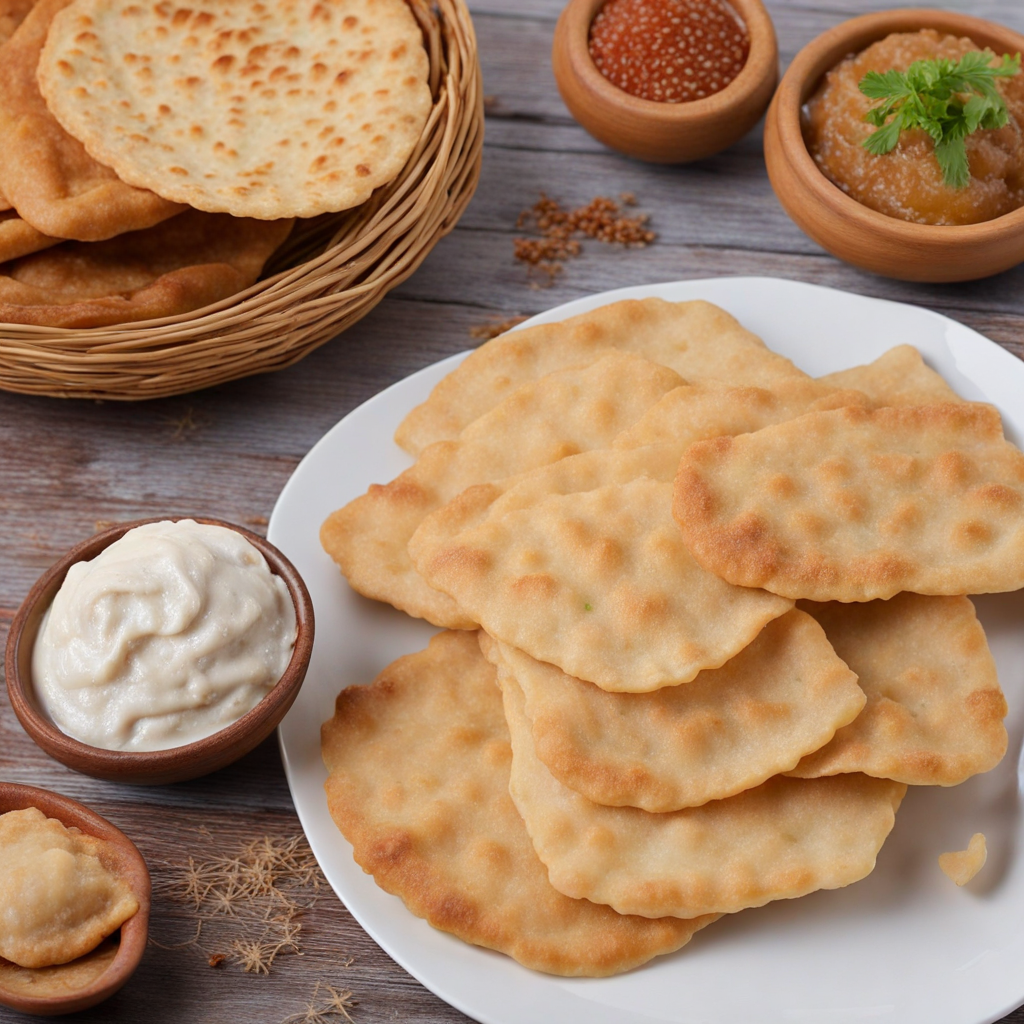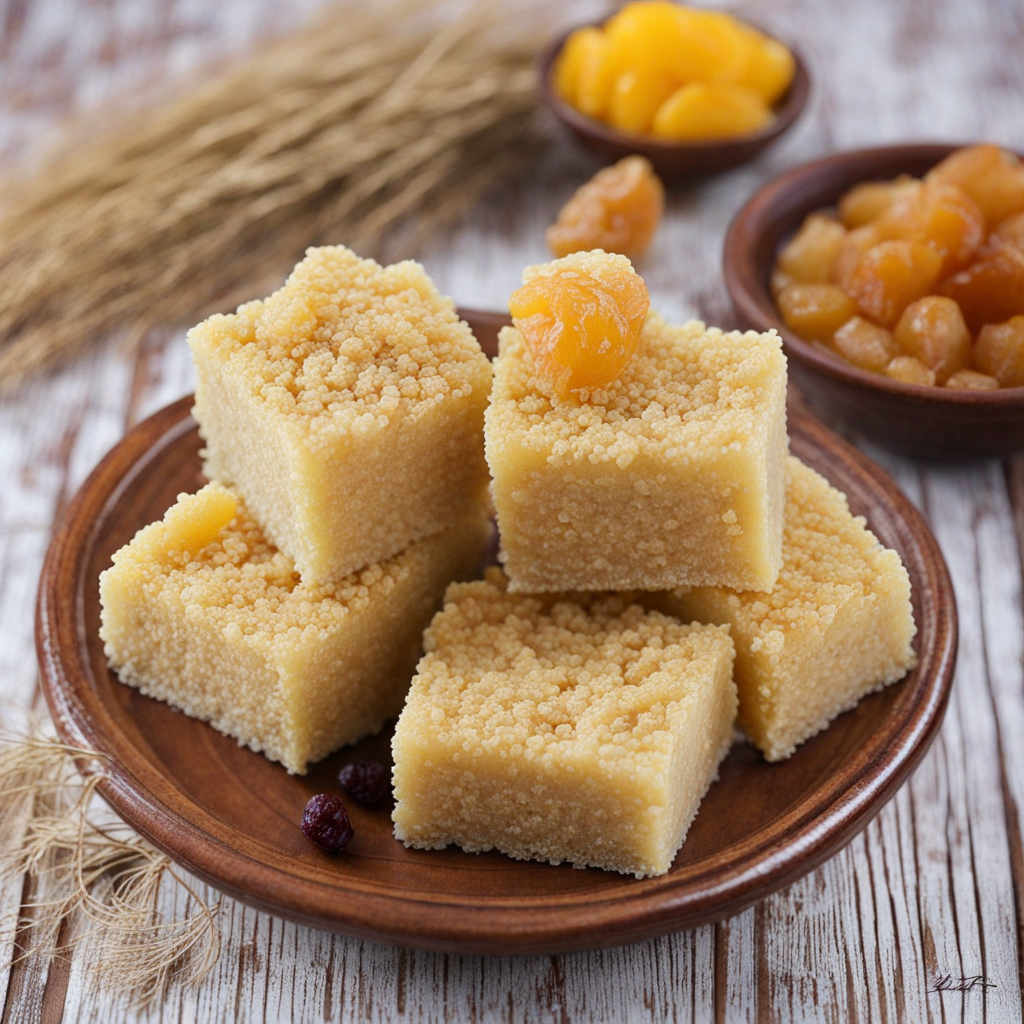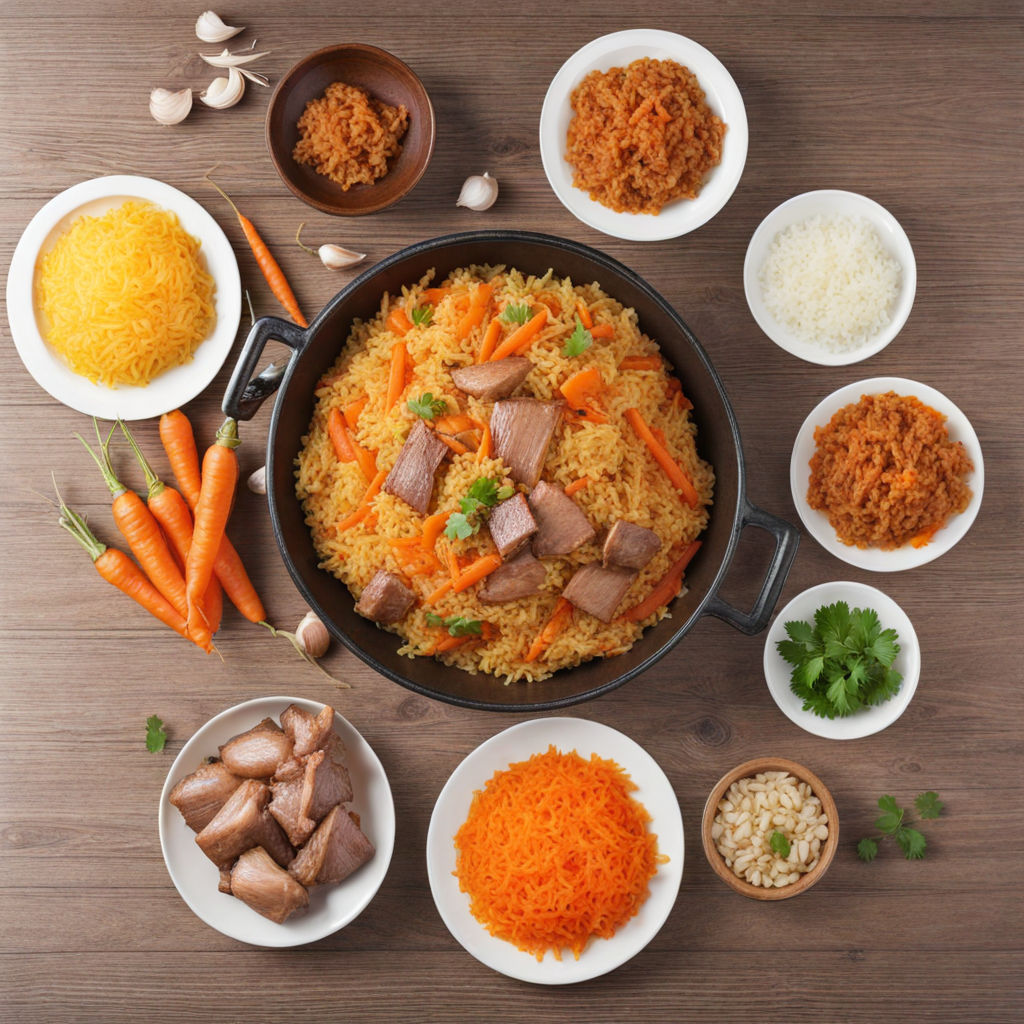Shelpek
Шелпек, a traditional Kazakh dish, is a type of deep-fried bread that has earned its place as a beloved staple in the cuisine of Kazakhstan. This unique bread has a rich history, often associated with the nomadic lifestyle of the Kazakh people. It is commonly served during festive occasions, family gatherings, and significant cultural events, reflecting the hospitality and warmth of Kazakh culture. The history of шелпек can be traced back to the nomadic traditions of the Kazakh people, who relied on simple yet nourishing foods to sustain themselves while moving across the steppes. The bread is believed to have been developed as a practical solution for the nomads, who needed a portable, long-lasting food that could be easily prepared over an open fire. The method of frying the dough in animal fat or oil not only made it easy to prepare but also enhanced its flavor and shelf life, allowing it to be consumed during long journeys. In terms of flavor, шелпек is characterized by its slightly crispy exterior and soft, airy interior. The bread has a subtle, nutty taste due to the frying process, which imparts a golden-brown color and a delightful crunch. When fresh, the aroma of шелпек is inviting, often reminiscent of warm, baked goods. It can be enjoyed plain or served with a variety of accompaniments, such as jams, honey, or even savory dishes like meat stews and soups. This versatility makes шелпек a favorite among
How It Became This Dish
Origin of Шелпек Шелпек, often referred to as a traditional Kazakh flatbread, has deep roots in the nomadic culture of Kazakhstan. This bread is believed to have originated among the Kazakh people, who have relied heavily on pastoralism and animal husbandry for centuries. The nomadic lifestyle necessitated the development of portable and easily prepared foods, leading to the creation of flatbreads like шелпек. Made primarily from wheat flour, water, and salt, шелпек is typically deep-fried or baked, resulting in a delightful texture that is both crispy on the outside and soft on the inside. Historically, the Kazakh steppes provided abundant natural resources, allowing the local population to cultivate grains that eventually became staples in their diet. The use of wheat flour in шелпек signifies the agricultural advancements that took place as the Kazakh people transitioned from pure nomadism to a more settled lifestyle. However, even as agriculture became more prominent, the traditional methods of making шелпек remained closely tied to the nomadic identity of the Kazakh people, serving as a bridge between their past and present. \n\n Cultural Significance The cultural significance of шелпек extends far beyond its role as a mere food item. This flatbread is often associated with hospitality and is a staple in Kazakh households, especially during gatherings and celebrations. It is customary to serve шелпек alongside various dishes, including meat, dairy products, and traditional soups, symbolizing abundance and generosity. The act of breaking bread together is seen as a gesture of goodwill and community, reinforcing social bonds among family and friends. In Kazakh culture, the preparation of шелпек can also be a communal activity. Families often gather to make large batches, sharing stories and laughter in the process. This practice not only fosters a sense of togetherness but also preserves the traditional methods of bread-making that have been passed down through generations. Additionally, шелпек is frequently present at significant life events, such as weddings and feasts, where it embodies the essence of Kazakh hospitality. \n\n Preparation and Variations The traditional method of making шелпек involves mixing flour with water and salt to create a dough, which is then rolled out into flat, round shapes. These dough rounds are either deep-fried or baked, and the choice of cooking method can vary by region and personal preference. In some cases, the dough may be flavored with ingredients such as butter or sour cream to enhance its richness. Regional variations of шелпек can also be found throughout Kazakhstan, reflecting local tastes and customs. For instance, in the southern regions, you might encounter a slightly thicker version that is often served with a spicy meat filling, while in the north, the bread may be thinner and more delicate, ideal for pairing with dairy products. The adaptability of шелпек allows it to fit seamlessly into various culinary contexts, making it a beloved food item across the country. \n\n Development Over Time As Kazakhstan has undergone significant political and social changes throughout its history, the preparation and consumption of шелпек have evolved as well. The Soviet era brought about a shift in agricultural practices and food availability, which influenced traditional recipes and methods. Wheat became more widely available due to state policies, leading to an increased consumption of bread products, including шелпек. In contemporary times, the resurgence of interest in traditional Kazakh cuisine has led to a revival of шелпек-making practices. As people seek to reconnect with their cultural roots, many are turning to age-old recipes and techniques. This has also sparked a new wave of culinary exploration, with chefs experimenting with modern interpretations of шелпек, incorporating unique flavors and presentations while still honoring the traditional essence of the dish. \n\n Шелпек in Modern Kazakhstan Today, шелпек remains an essential feature of Kazakh cuisine, celebrated for its simplicity and versatility. It is commonly found in both homes and restaurants, where it is often served fresh and warm, accompanied by an array of traditional dishes. The bread has also gained popularity beyond Kazakhstan's borders, with increasing interest from food enthusiasts and chefs looking to explore Central Asian flavors. Moreover, festivals and cultural events dedicated to Kazakh heritage often highlight шелпек as a central element of the culinary experience. These celebrations not only showcase the bread but also educate attendees about its historical significance and the traditions surrounding its preparation. The revival of interest in traditional foods like шелпек reflects a broader trend toward valuing culinary heritage and sustainability in food practices. \n\n Conclusion In summary, шелпек is not just a food item but a vital part of Kazakhstan's cultural identity. Its origins in the nomadic lifestyle of the Kazakh people, its role in fostering community and hospitality, and its adaptability to modern culinary trends all contribute to its enduring significance. As Kazakhstan continues to navigate the complexities of modernity while preserving its rich traditions, шелпек stands as a delicious symbol of resilience and cultural pride.
You may like
Discover local flavors from Kazakhstan







